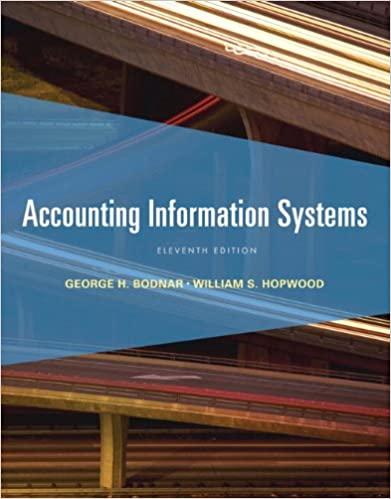1. For several years, a clients physical inventory count has been lower than what was shown on...
Question:
a. Purchases returned to vendors.
b. Sales returns received.
c. Sales discounts allowed.
d. Cash purchases.
2. Ball Company, which has no perpetual inventory records, takes a monthly physical inventory and reorders any item that is less than its reorder point. On February 5, 20XX, Ball ordered 5,000 units of item A. On February 6, 20XX, Ball received 5,000 units of item A, which had been ordered on January 3, 20XX. To prevent this excess ordering, Ball should
a. Keep an adequate record of open purchase orders and review it before ordering.
b. Use perpetual inventory records that indicate goods received, issued, and amounts on hand.
c. Use pre-numbered purchase orders.
d. Prepare purchase orders only on the basis of purchase requisitions.
3. Sanbor Corporation has an inventory of parts consisting of thousands of different items of small value individually but significant in total. Sanbor could establish effective internal accounting control over the parts by requiring
a. Approval of requisitions for inventory parts by a company officer.
b. Maintenance of inventory records for all parts included in the inventory.
c. Physical counts of the parts on a cycle basis rather than at year- end.
d. Separation of the store- keeping function from the production and inventory record- keeping functions.
4. To achieve effective internal accounting control over fixed-asset additions, a company should establish procedures that require
a. Capitalization of the cost of fixed- asset additions in excess of a specific dollar amount.
b. Performance of recurring fixed- asset maintenance work solely by maintenance department employees.
c. Classifying as investments those fixed- asset additions that are not used in the business.
d. Authorization and approval of major fixed- asset additions.
5. Which of the following is the most important internal control over acquisitions of property, plant, and equipment?
a. Establishing a written company policy distinguishing between capital and revenue expenditures
b. Using a budget to forecast and control acquisitions and retirements
c. Analyzing monthly variances between authorized expenditures and actual costs
d. Requiring acquisitions to be made by user departments
6. Which of the following is an internal accounting control weakness related to factory equipment?
a. Checks issued in payment of purchases of equipment are not signed by the controller.
b. All purchases of factory equipment are required to be made by the department in need of the equipment.
c. Factory equipment replacements generally are made when estimated useful lives, as indicated in depreciation schedules, have expired.
d. Proceeds from sales of fully depreciated equipment are credited to other income.
7. Which of the following internal accounting control procedures could best prevent direct labor from being charged to manufacturing overhead?
a. Reconciliation of WIP inventory with cost records
b. Comparison of daily journal entries with the factory labor summary
c. Comparison of periodic cost budgets and time cards
d. Reconciliation of unfinished job summary and production cost records
8. Which of the following is a question the auditor would expect to find on the production cycle section of an internal accounting control questionnaire?
a. Are vendors’ invoices for raw materials approved for payment by an employee who is independent of the cash disbursements function?
b. Are signed checks for the purchase of raw materials mailed directly after signing without being returned to the person who authorized the invoice processing?
c. Are all releases by storekeepers of raw materials from storage based on approved requisition documents?
d. Are details of individual disbursements for raw materials balanced with the total to be posted to the appropriate general ledger account?
Corporation
A Corporation is a legal form of business that is separate from its owner. In other words, a corporation is a business or organization formed by a group of people, and its right and liabilities separate from those of the individuals involved. It may...
Fantastic news! We've Found the answer you've been seeking!
Step by Step Answer:
Related Book For 

Accounting Information Systems
ISBN: 9780132871938
11th Edition
Authors: George H. Bodnar, William S. Hopwood
Question Posted:





